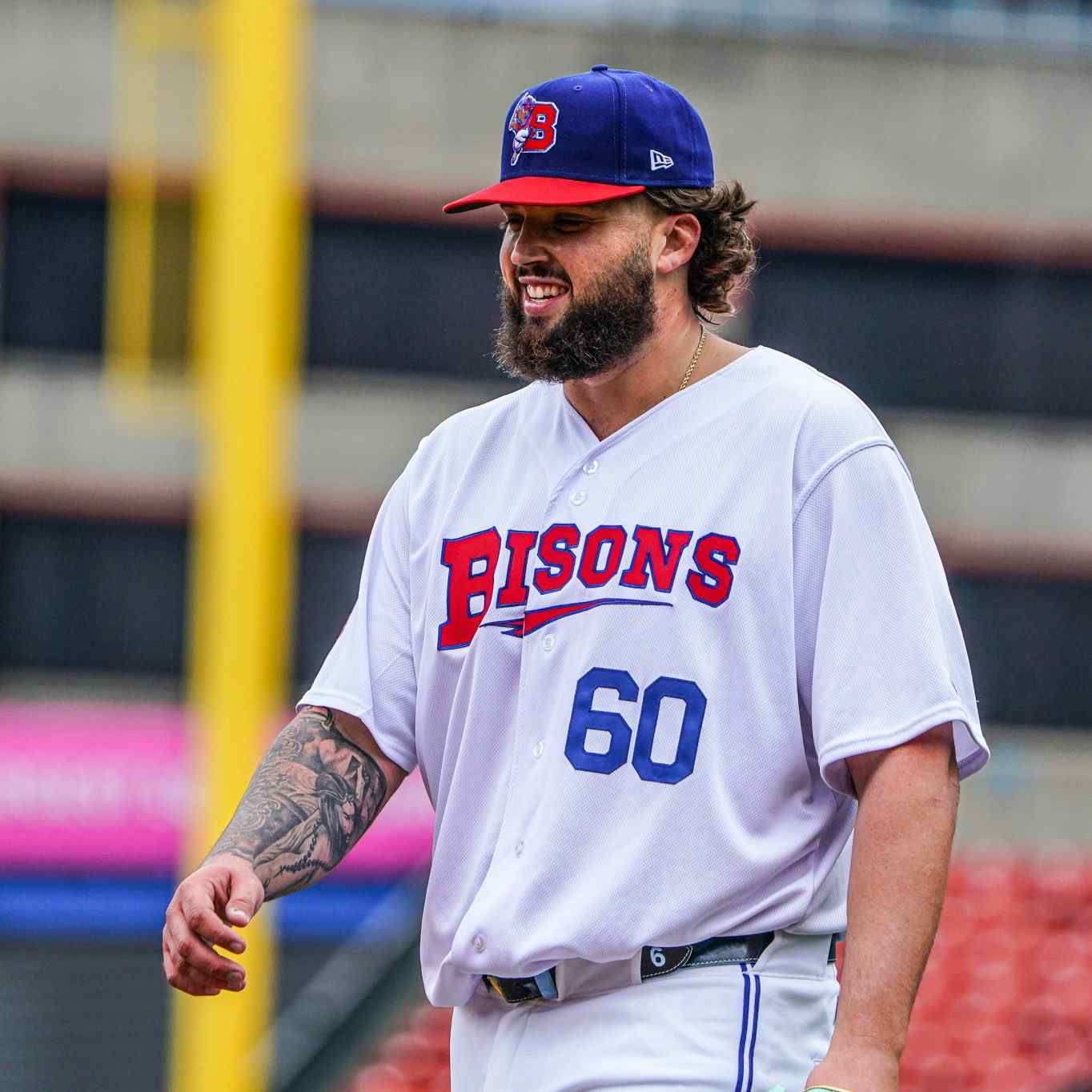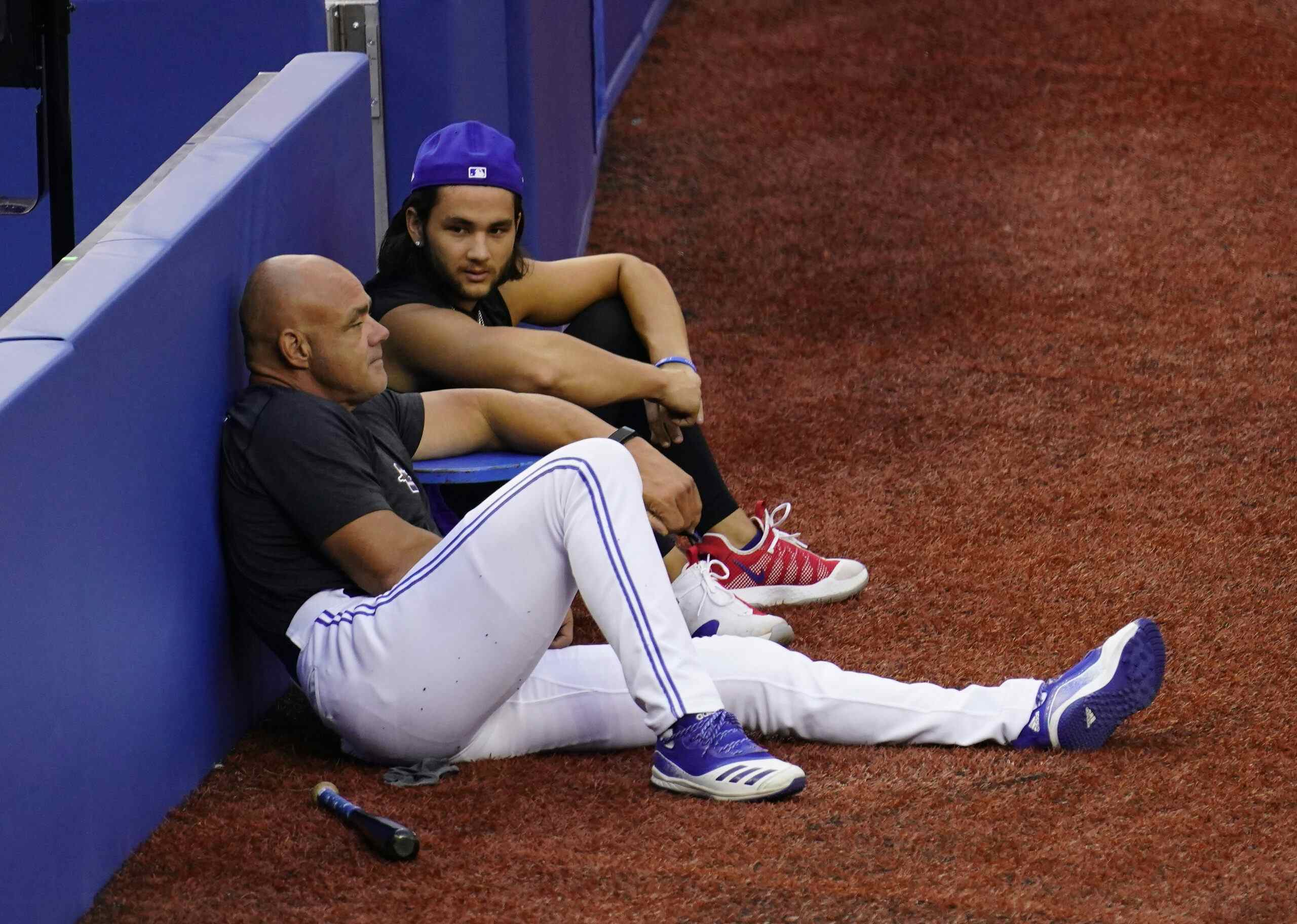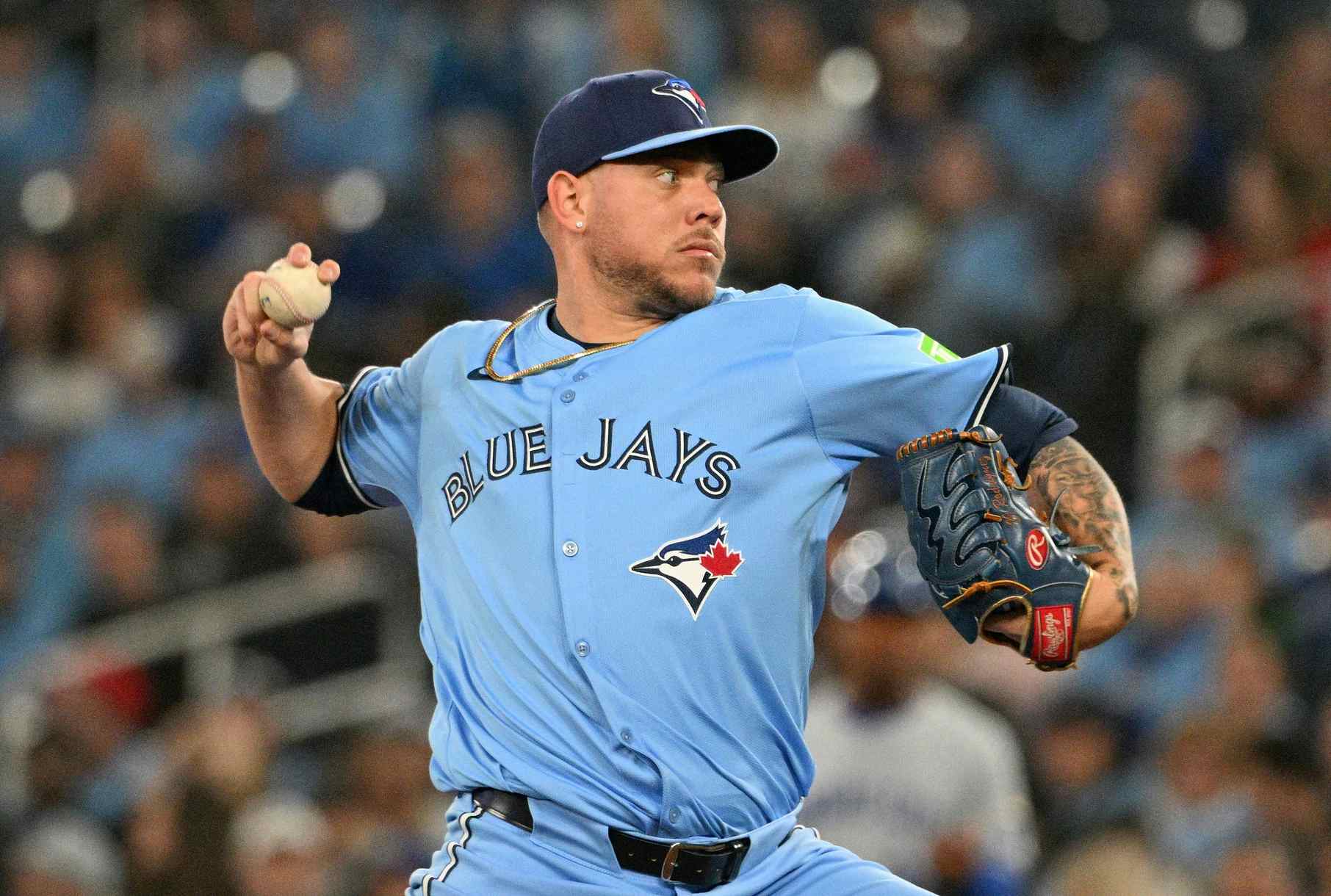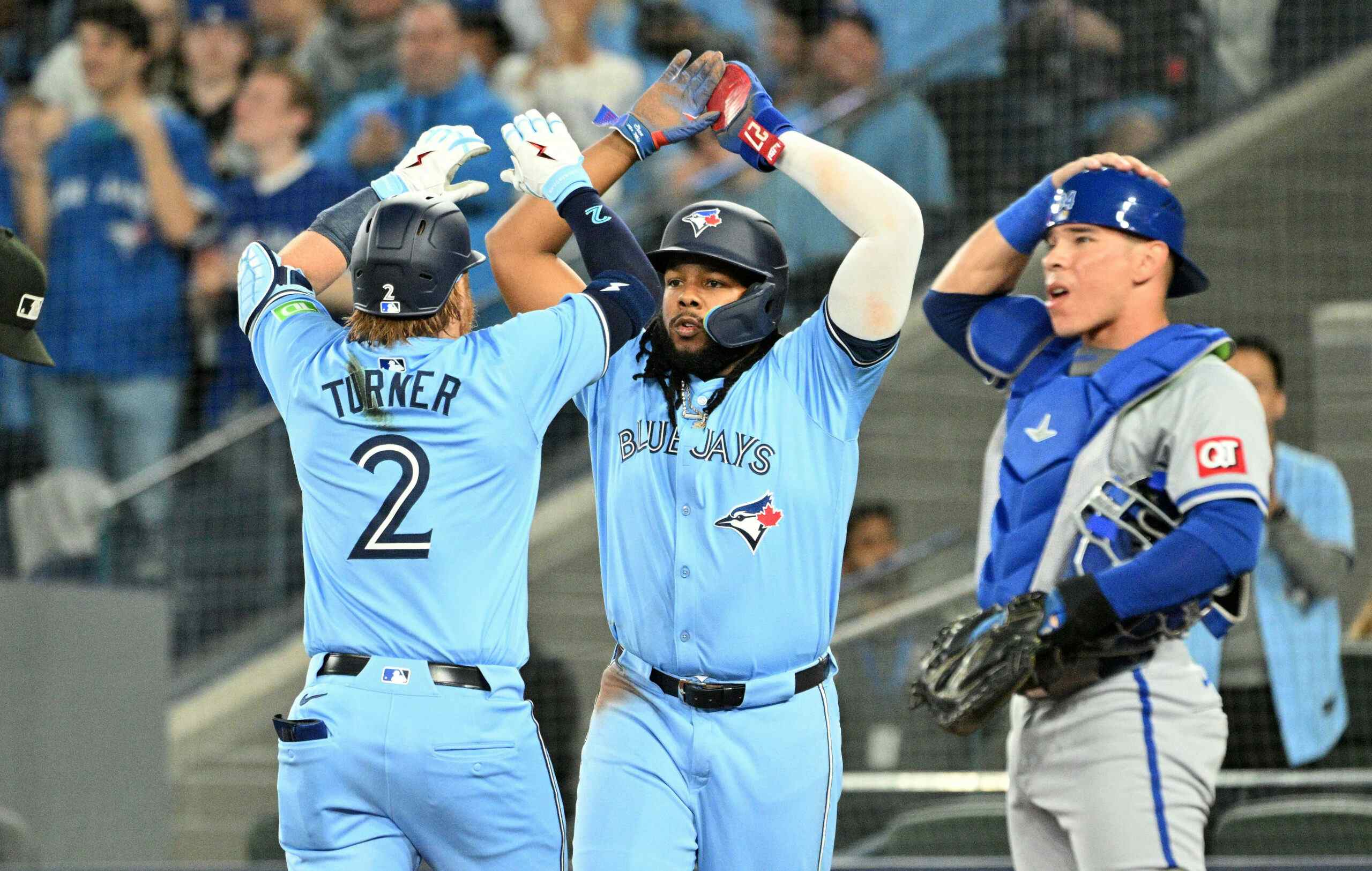Considering “Death To 2018”
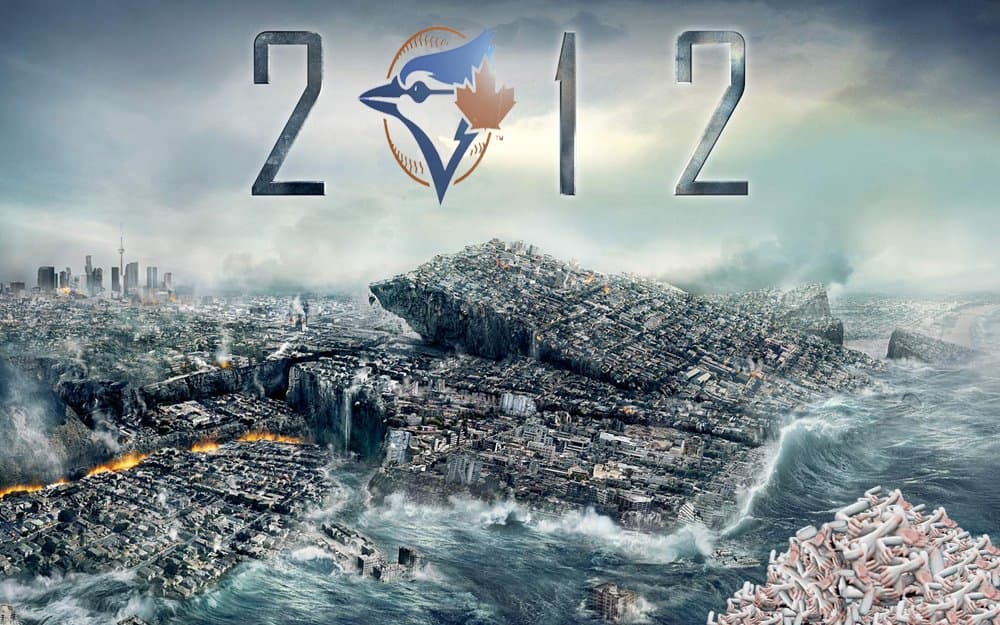
On Wedneday night, when I tweeted out my mailed-in, written-by-iPhone post about Marcus Stroman and his then-mysterious exit from his start against the Yankees, I quipped “now *THIS* is doom-and-gloom clickbait!”
That was a reference to something that Mike Wilner had said to a JaysTalk caller earlier in the week, which I had ranted about in my Anatomy of a JaysTalk piece on the episode. According to Wilner there are writers out there trolling for 2017-is-over clicks, and… uh… while that’s not a fair characterization of John Shell’s extensively researched and well written latest for BP Toronto, it… uh… ends up having pretty close to the same effect.
Especially factoring in the title: Death to 2018: Future Payroll Implications of a Nightmare Start to the Year.
Now, before you get thinking I’m being too much of a jerk, keep in mind that I vehemently disagreed with Wilner’s lament about writers fishing for corpse-clicks. This is stuff that ought to be explored. In this day and age, if something’s in the front office’s purview, it’s fodder for #content. Period. Full stop.
The future of the club’s payroll and its payroll structure is something that, to a much less-researched extent, has been explored. For example: by yours truly. And while I certainly won’t put my non-existent business bona fides up against Jon’s, there are a few things in his piece that I think are worth examining:
First and foremost, in setting up the gloomy outlook for 2018, he says that “the current team without Estrada, Liriano and Bautista is likely to cost about $138M in 2018.” He does so by first calculating approximate arbitration raises for Josh Donaldson, Marcus Stroman, Roberto Osuna, Devon Travis, Kevin Pillar, and Aaron Sanchez to be about $44 million — or, $21 million more than that group is currently earning. He later explains:
My simple math is to start with the $163M payroll from this year, subtract the $46M for the three big free agents, and add $21M in arbitration increases to get to $138M. There’s small other adjustments, including small raises for Loup, Goins and Gurriel and elimination of the Upton contract, but this math is more-or-less right.
This is different than the outlook I arrived at when I wrote last week about 2018 — which, looking now, is not without it’s own problems, which I will address below. Here’s what I wrote:
Right now the 2018 Blue Jays have $76 million in payroll commitments. To that, however, we need to add something like $25 million for Josh Donaldson, and $5 million for Marcus Stroman, as they’ll both be due arbitration raises. And with Sanchez, Travis, Osuna, and Pillar hitting arbitration for the first time, the club is looking at another $10 million or more from that group.Assuming payroll stays in the $160 million range, that leaves them with only about $45 million to spend on free agents.
Two things: 1) My calculation of arbitration raises for that key group is $4 million short of Jon’s. 2) I’ve missed a key step by not accounting for pre-arb players’ salaries.
OK, so let’s try this again:
Cot’s has the Jays at $76.304 million in commitments for 2018. Add $44 million for the group of key arbitration eligibles and you’re at $120 million — or, $40 million less than their current payroll ($43 million less, to be exact).
That accounts for 13 players: Tulowitzki, Martin, Donaldson, Happ, Morales, Pearce, Smoak, Stroman, Pillar, Osuna, Travis, Sanchez, and Lourdes Gurriel. They then have three arbitration-eligible players who are non-tender candidates — Ezequiel Carrera (making $1.1 million in 2017), Aaron Loup ($1.2 million), and Ryan Goins ($550K) — and in this scenario would be filling out the rest of the roster with guys making the league minimum. If they keep all three, which seems dubious (*COUGH* non-tender Loup *COUGH*), even with their raises and pre-arb guys the number we’re looking at is more like $130 million.
OK, so maybe $8 million doesn’t make a whole hell of a lot of difference, but save a couple million by non-tendering Loup and the Jays are around $128 million, which is about $35 million south of where their payroll is currently.
The holes to fill are big, and that amount of money won’t go that far. And speaking about the potential returns on trades the Jays might make before the deadline in 2017, Jon is not wrong: “One would certainly expect a decent-but-not-amazing return here, but there’s not much precedent for trading for players that are likely to be better then the ones you’re trading away the very next year,” he says. “It doesn’t make much sense for a contender to trade a useful MLB piece, so you’re looking at a return that may eventually be better than what you’re trading away, but not likely in 2018.”
But the pieces the Jays get in return for trading players wouldn’t necessarily have to be better than the ones they’re trading away, they’d just have to be able to help. The 2018 Jays could potentially recoup some of their lost wins on the free agent market, and even if they don’t, a team with Josh Donaldson, plus all the other pieces already here, will always have a fighting chance. Say you package Estrada and Bautista for a starter who, though maybe a little green, can take the ball a whole bunch in 2018, and that’s huge. In 2015, the Blue Jays gave up two of those guys, Daniel Norris and Matt Boyd, for a couple months of David Price alone, so I think it’s doable — even if, as Jon notes, Buster Olney wrote this week for ESPN.com about the potential for the trade market to be over-saturated with starters.
Add a piece or two like that to the current core and spend wisely on the free agent market and you certainly have a chance to be competitive. I keep coming back to the World Series winning 2013 Red Sox, who came into that season having added $35.6 million in salary in the underwhelming form of Mike Napoli, Stephen Drew, Shane Victorino, and Jonny Gomes. The Jays could follow this type of model and if not repeat Boston’s unlikely success, at least give the fans a fun season and stay vastly more relevant. They could aim for shorter-term deals, which would make whoever they bring in a tradeable asset next July, along with Happ, Pearce, maybe Morales and Martin (who’ll each have just a year and a half left on their deals by next July), and, of course, Donaldson.
They won’t be World Series favourites from Opening Day in this scenario, but it could work.
And how much damage to the rebuild going on under the hood would it really do? I suppose you miss out on whatever you might have been able to get for Tulo or Martin in a more full-on rebuild, but without eating a lot of salary you’re probably not getting a whole lot for those guys anyway. The crucial difference — other than how much saved payroll Rogers could pocket in the process of a full-on rebuild — would be between the 2017 package for Donaldson and the 2018 one. That is, assuming you don’t trade him in 2017 and still try to be good in 2018 (someone on Twitter suggested to me today that the could theoretically deal him for a package around Alex Bregman, which… is a thing I’m not quite ready to entertain thinking about just yet). Or that you don’t, y’know, fucking re-sign him.
The difference between the trade returns of these two approaches wouldn’t be nothing. But completely punting on 2018 before it starts isn’t nothing, either. This is something Shell points out himself, as early on in his piece he looks at how teams who gained significantly at the gate, then quickly got bad for a couple seasons, tended to lose huge amounts of the gains they had initially made. Jon does this to illustrate the likelihood of a coming payroll drop, but what I think it also does is reinforce the idea that the Jays… y’know… maybe shouldn’t let that happen.
“In my previous article,” he writes, “I estimated that the 1M increase in fans and 70% increase in TV viewership that happened at the same time was worth about $75M USD in revenue (with limited marginal cost). A loss of 45-65% of that means a loss of about $35-50M USD.”
And those are just losses for the Blue Jays. Sportsnet would surely lose big in this equation, too — which has to be a factor for the parent company. And though it’s perhaps naïve to think Rogers would look too much at anything other than the short-term losses, there are deeper things to think about, too.
Consider this from last November:
If most analysts are right, and the player budget stays around $140M, the Jays can buy about 2-3 more wins in free agency. So, an 84-85 win team that, if everything breaks right, might sneak into the wild card.There’s no way that happens. Mark Shapiro has an incredibly strong business case to say that this approach risks tens of millions of dollars in revenue. He can say convincingly that if the team can keep winning, and his newly built and incredibly capable executive team can build a farm system to deliver cheap wins in a few years, they may be able to sustain that revenue long term, and limit the increase in payroll in the future. But that takes time, and if the team doesn’t keep winning now, it might take years just to get back to where they are today. The logical business decision is to invest heavily in the next 2-3 years, give the front office time to build the farm system, with the goal of building a more robust fan base that will make it through down years in the future. If it all fails, Shapiro also has a team more than capable of selling the pieces if they have to.The risk of not investing in 2017 and 2018 is much higher than doubling down.
I think all those things still absolutely hold true, even at 9-19. And the author who penned those words back in November? Jon Shell!
I like that version of Jon better than the “even 2018 will probably suck” one! But apparently that old Jon had to go away, because in today’s piece he explains that “if the Jays had started 19-9 (or even .500 like last year), hope would likely have abounded, recent fans would likely have remain engaged, attendance would be poised to grow, and both the business case for investing in 2018 and this article would have been very different.”
Wait, so… turn five April losses into wins and “death to 2018” goes away???
That seems, y’know, weird. At the very least it makes this all seem incredibly premature.
And maybe that’s really the point I’m fumbling for here. It’s a good piece, and well researched, and I’m certainly not saying don’t read it — quite the opposite — it’s just… I don’t think things have to be this way at all. I don’t think we should be resigned to this fate, I don’t think Rogers or the Jays should be — or are — resigned to it. And I don’t exactly think we should be gift-wrapping our gleeful acceptance of it, cheerily remembering 2015 and ’16 as we shrug in the face of the economic argument that 2018 already isn’t worth saving.
A team with Donaldson, Stroman, Sanchez, Osuna, Happ, Travis, Pillar, and — even with another year under their belts — Morales, Martin and Tulo, isn’t in bad shape. Rogers and the Jays’ brain trust may ultimately decide they don’t see it that way, and if that happens we should be insisting they’re fucking wrong and should find the resources and the paths to keep the team competitive, rather than conceding that, in the reality created singularly by Rogers’ willingness or unwillingness to spend, they’re probably right and punting on another season after this one, at the very least, is OK.
I guess I’m kinda of the mind that, y’know, fuck that.
Recent articles from Andrew Stoeten


